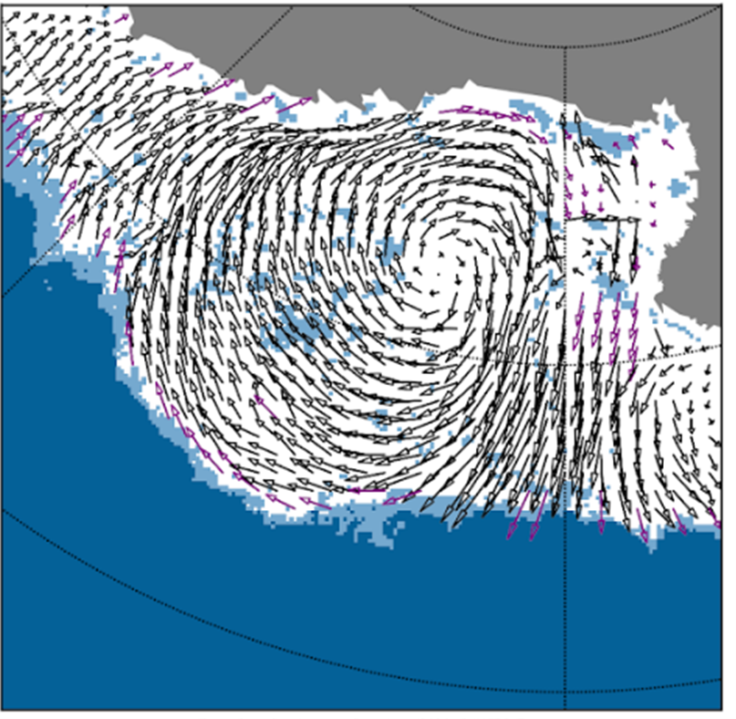Antarctic Cyclones: Expression in Sea Ice (ACES)
- Start date
- 14 October, 2019
- End date
- 8 January, 2022
The project ACES (Antarctic Cyclones: Expression in Sea-ice) addressed the issue of how sea ice cover in the Southern Ocean changes when a high intensity storm passes over the ice. The cyclonic (circular, similar to a hurricane) motion of the wind during a storm can cause the sea ice to move around and potentially open leads or patches in the ice. In the winter months, the ocean is much warmer than the atmosphere – if the sea ice opens due to a storm, large amounts of heat can transfer from the ocean to the atmosphere, potentially cooling the ocean, forming more sea ice, and/or adding energy to the storm. Understanding the interactions between the ocean, sea ice, and atmospheric cyclones is important to improve the performance of global climate models that predict future climate scenarios.
One of the main difficulties in understanding the interaction between the ocean, sea ice, and a single cyclone is the challenge of observing it. Cyclones only stay over the sea ice for a few days at a time. Satellite observations of sea ice are recorded as daily averages, and it is difficult to make ocean measurements on that scale. The objective of ACES is to use satellite data of sea ice displacement and atmospheric reanalysis data of cyclones (in terms of mean sea level pressure) to correlate a cyclone with the sea ice beneath and identify how the sea ice cover changes. We found that a large cyclone corresponds with sea ice vorticity; that is, the ice begins to rotate in the same circular pattern as the cyclone.
In order for this information to be useful to improve climate models, we discovered that more knowledge is needed about the high frequency variability of sea ice in general, not only in the presence of a cyclone. Sea ice variabilty at time scales of a week or less may change with season, region, and the state of the ice. Thus, we focused on increasing and synthesizing basic research on high frequency sea ice variability around Antarctica. We found that high frequency sea ice variability is complex – it can be caused by atmospheric forcing, such as cyclones, as well as by ocean waves, tides, and eddies. The effect of each is on different time scales, and is modulated by the ice state (whether free floating or pack ice), and by the presence of land or other barriers. This complexity requires further study and synthesis of current information to be useful to climate models and predictions.

Satellite-tracked ice drift during 23-25th June 2019, showing the influence of the cyclone on ice drift. These results are derived by Eumetsat OSI-SAF by examining the displacement of patterns in successive images of sea ice. This 2-day estimate is derived by combining estimates from multiple satellite sensors.
Stefanie Mack – MSCA ACES Fellow
Paul Holland – Supervisor
